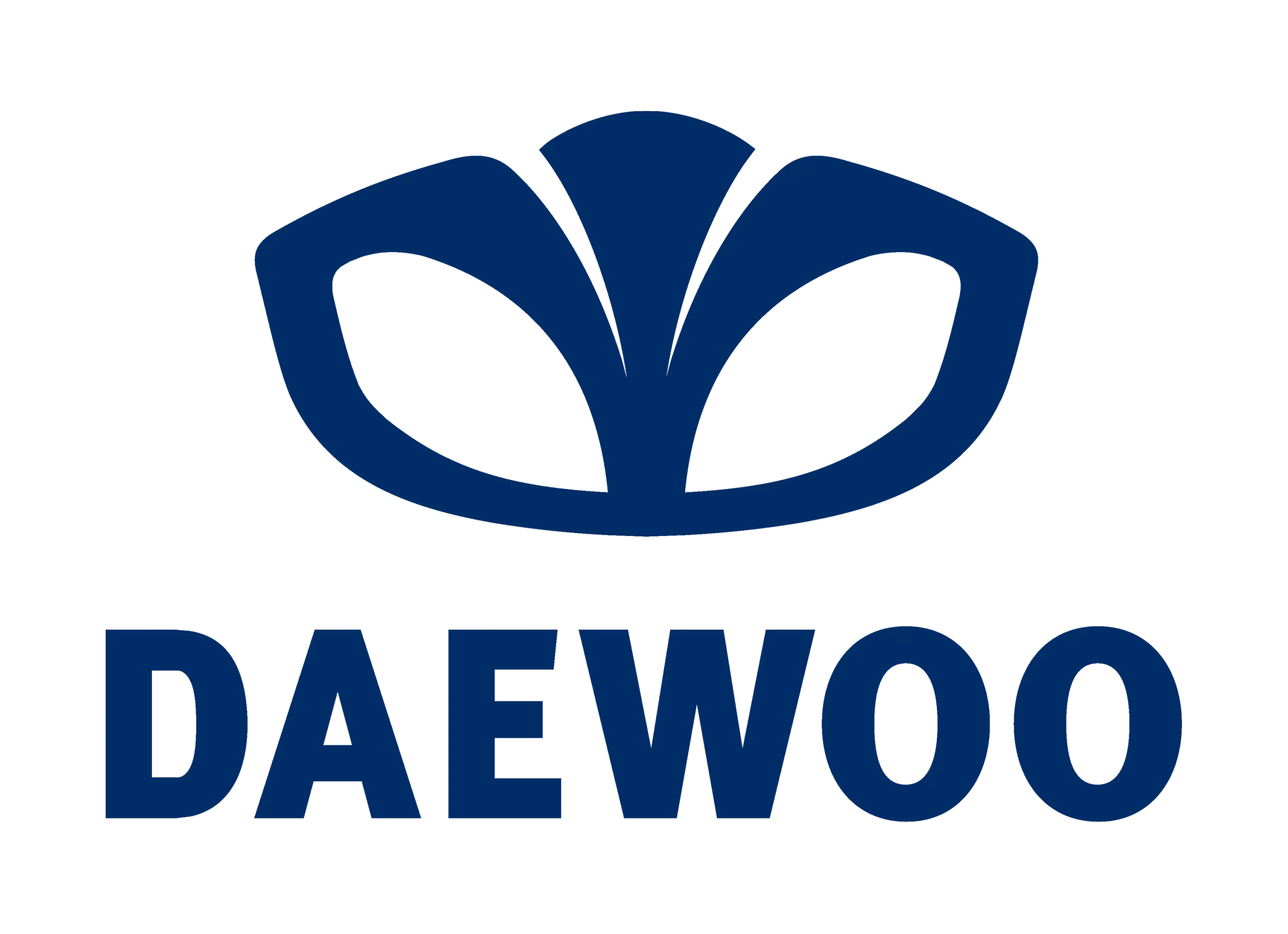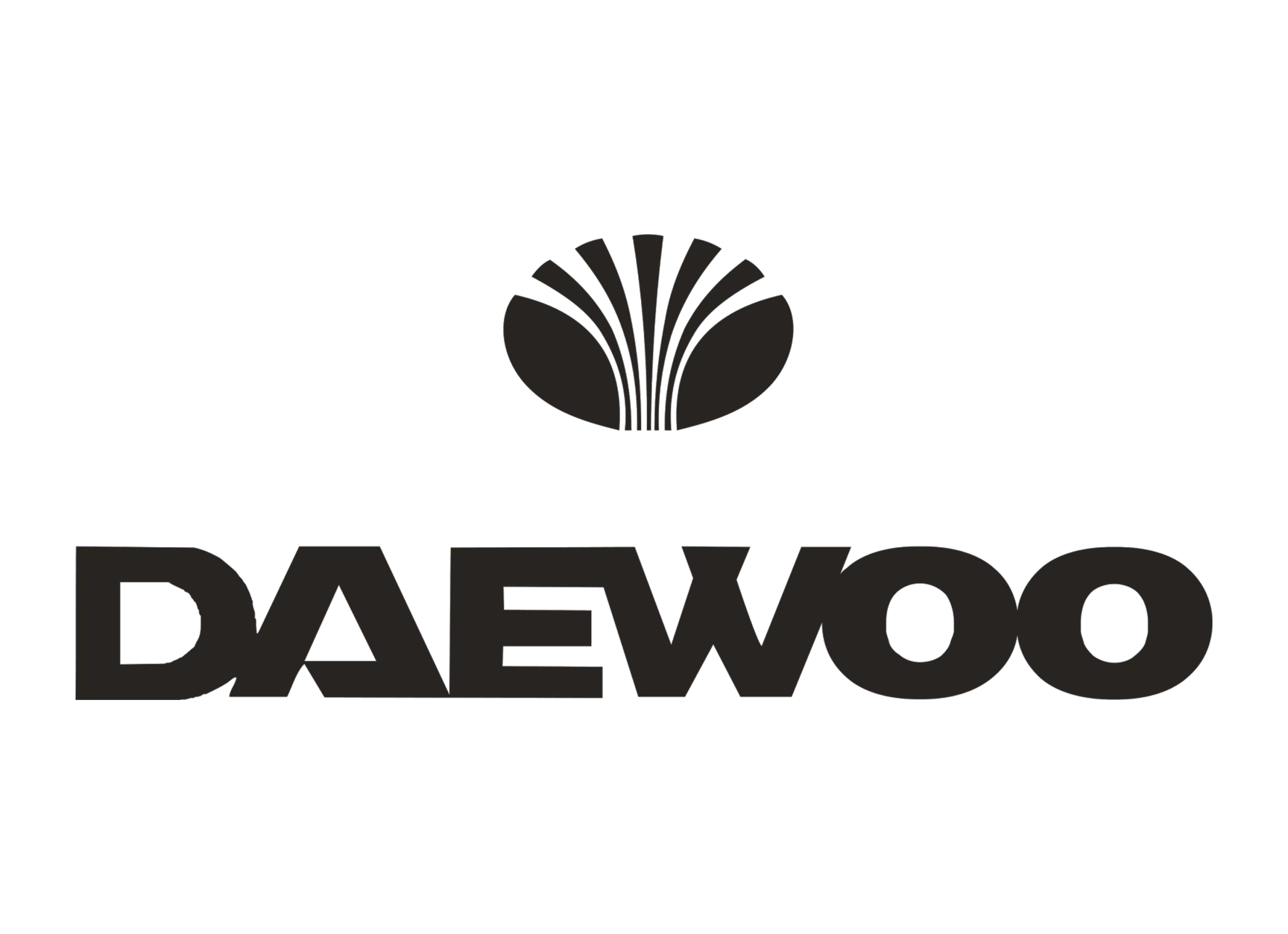Daewoo logo

The Daewoo logo underwent several changes over the years, the old version features gushing stripes painted in purple and white, with small ovals on either side. The alternating colors and shapes are meant to symbolize energy and motion, suggesting that Daewoo’s cars were dynamic and powerful.
The bold, sans-serif font used for the brand name further reinforces this message, as it gives the impression of strength and durability. The metallic, three-dimensional design of the emblem also adds to the overall sense of quality and reliability that the company wanted to convey.
The small ovals on either side of the stripes are somewhat reminiscent of eyes or headlights, which could be interpreted as a nod to Daewoo’s automotive focus. Additionally, the purple color used for the stripes is often associated with luxury and sophistication, which may have been another way for the company to differentiate itself from other, more utilitarian brands.
Overall, the Daewoo logo was designed to communicate a sense of innovation, power, and luxury, all qualities that were important for a car manufacturer looking to make a name for itself in a crowded market. While the brand is no longer in use, the logo remains a testament to the company’s commitment to creating high-quality vehicles that were both practical and stylish.
Daewoo Brand Overview
22 March 1967
Kim Woo-choong
Seoul, South Korea
There is no official website
Daewoo entered the automotive industry in the 1970s, producing cars primarily for the domestic market. In the 1990s, the company expanded globally and became known for producing affordable and reliable cars. However, the bankruptcy of the Daewoo Group in 1999 had a significant impact on the automotive division. The brand was sold to General Motors (GM) in 2001, and the new company, GM Daewoo, continued to produce cars under the Daewoo brand name until 2011 when it was rebranded as GM Korea.
Daewoo’s most popular models included the Lanos, Nubira, and Leganza. These cars were known for their practicality and affordability, making them popular choices for first-time car buyers. Daewoo also produced commercial vehicles and SUVs, including the Musso and Korando.
Overall, Daewoo made significant contributions to the automotive industry, but its legacy is complicated by the bankruptcy of its parent company. While the Daewoo brand is no longer in production, its influence is still felt in the cars produced by GM Korea.
Daewoo History
Daewoo was a South Korean conglomerate that started as a small textile company in 1967. Under the leadership of Kim Woo Choong, the son of the head of the Daegu provincial administration, the company grew rapidly, expanding into numerous industries, including electronics, shipbuilding, and automotive manufacturing.
Daewoo entered the automotive industry in the 1970s, producing cars primarily for the domestic market. The company’s first car, the Daewoo 500, was introduced in 1978. It was a compact sedan that was developed in-house and powered by a 1.5-liter four-cylinder engine.
Throughout the 1980s, Daewoo continued to produce small, affordable cars for the Korean market, including the Maepsy and the Royale. However, it wasn’t until the 1990s that Daewoo began to expand globally and gain recognition as a significant player in the automotive industry.
One of the most significant developments for Daewoo during this time was the creation of the Daewoo Motor Company, which was established in 1982 as a joint venture with General Motors (GM). Daewoo Motor Company was responsible for the development and production of Daewoo’s cars and commercial vehicles, which were sold under the Daewoo brand name.
In the early 1990s, Daewoo started to export cars to Europe, and by 1995, the company was selling cars in over 130 countries worldwide. The company’s cars were known for their affordability, reliability, and practicality, making them popular choices for first-time car buyers.
Some of Daewoo’s most popular models during this time included the Lanos, Nubira, and Leganza. The Lanos was a subcompact car that was available as a sedan or a hatchback, while the Nubira was a compact car available as a sedan, wagon, or hatchback. The Leganza was a mid-size sedan that was designed to compete with more upscale models from other manufacturers.
Daewoo also produced commercial vehicles and SUVs, including the Musso and Korando. The Musso was a mid-size SUV that was produced from 1993 to 2005, while the Korando was a compact SUV that was introduced in 1996 and is still in production today under the ownership of SsangYong.
Despite the success of its automotive division, the Daewoo Group as a whole was struggling financially in the late 1990s. The company had taken on significant debt to fund its expansion, and a financial crisis in Asia made it difficult to continue borrowing money. In 1999, the company declared bankruptcy with a debt of 50 billion dollars, making it one of the largest bankruptcies in history.
Following the bankruptcy of the Daewoo Group, General Motors purchased the assets of Daewoo Motor Company in 2001, creating a new company called GM Daewoo. GM Daewoo continued to produce cars under the Daewoo brand name until 2011 when it was rebranded as GM Korea.
Today, the Daewoo brand is no longer in production, but its influence is still felt in the cars produced by GM Korea. Many of the company’s former engineers and designers continue to work for the company, and their expertise has contributed to the development of new models like the Chevrolet Cruze and the Spark.
In conclusion, Daewoo made significant contributions to the automotive industry during its time as a major player. While the bankruptcy of its parent company was a significant setback, the legacy of Daewoo’s cars and commercial vehicles continues to influence the industry today.













